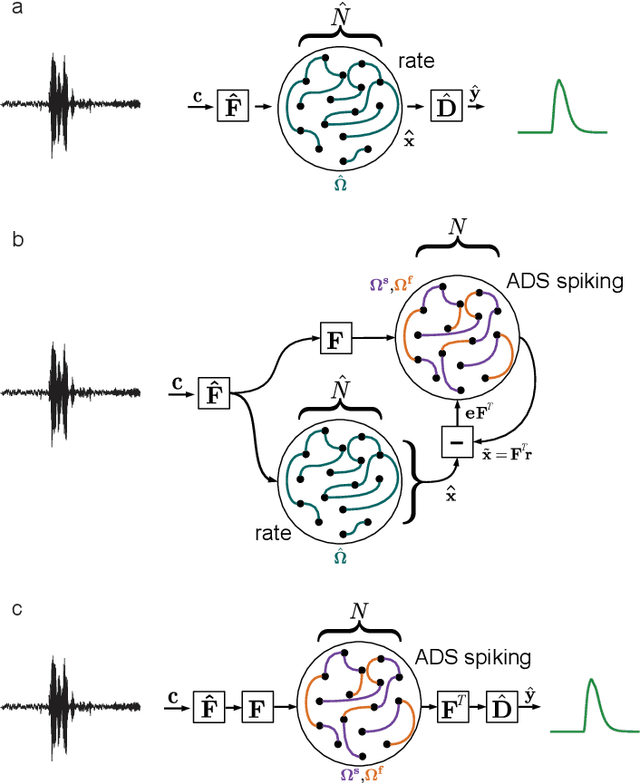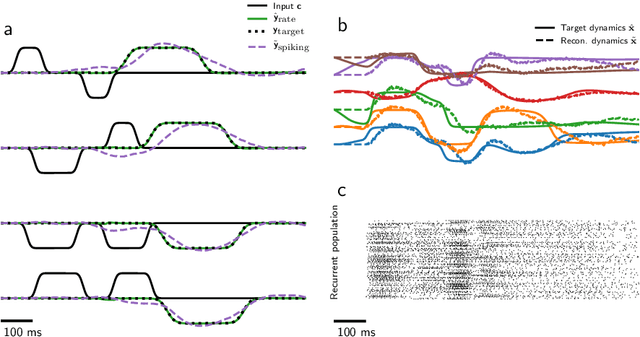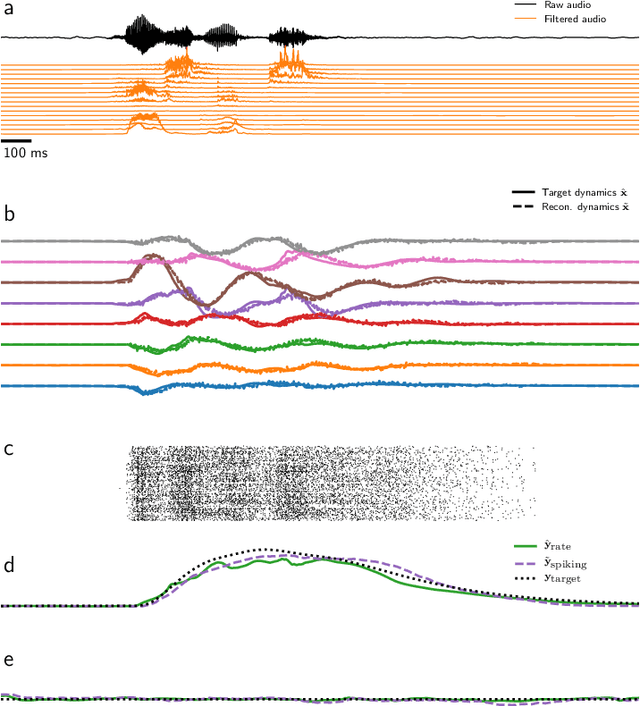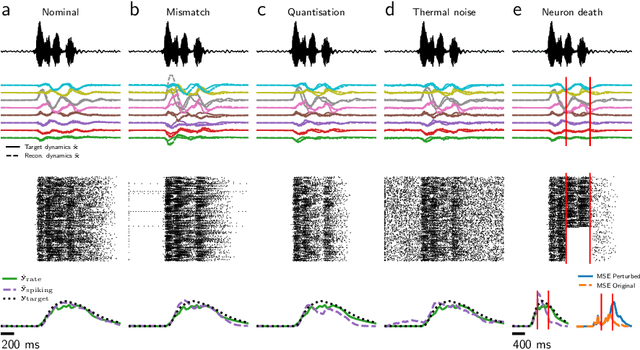Sergio Solinas
Supervised training of spiking neural networks for robust deployment on mixed-signal neuromorphic processors
Feb 17, 2021



Abstract:Mixed-signal analog/digital circuits can emulate spiking neurons and synapses with extremely high energy efficiency, an approach known as "neuromorphic engineering". However, analog circuits are sensitive to process-induced variation among transistors in a chip ("device mismatch"). For neuromorphic implementation of Spiking Neural Networks (SNNs), mismatch causes parameter variation between identically-configured neurons and synapses. Each chip therefore exhibits a different distribution of neural parameters, causing deployed networks to respond differently between chips. Current solutions to mitigate mismatch based on per-chip calibration or on-chip learning entail increased design complexity, area and cost, making deployment of neuromorphic devices expensive and difficult. Here we present a supervised learning approach that addresses this challenge by maximizing robustness to mismatch and other common sources of noise. Our method trains SNNs to perform temporal classification tasks by mimicking a pre-trained dynamical system, using a local learning rule adapted from non-linear control theory. We demonstrate our method on two tasks requiring memory, and measure the robustness of our approach to several forms of noise and mismatch. We show that our approach is more robust than several common alternatives for training SNNs. Our method provides a viable way to robustly deploy pre-trained networks on mixed-signal neuromorphic hardware, without requiring per-device training or calibration.
A Spiking Network for Inference of Relations Trained with Neuromorphic Backpropagation
Mar 11, 2019



Abstract:The increasing need for intelligent sensors in a wide range of everyday objects requires the existence of low power information processing systems which can operate autonomously in their environment. In particular, merging and processing the outputs of different sensors efficiently is a necessary requirement for mobile agents with cognitive abilities. In this work, we present a multi-layer spiking neural network for inference of relations between stimuli patterns in dedicated neuromorphic systems. The system is trained with a new version of the backpropagation algorithm adapted to on-chip learning in neuromorphic hardware: Error gradients are encoded as spike signals which are propagated through symmetric synapses, using the same integrate-and-fire hardware infrastructure as used during forward propagation. We demonstrate the strength of the approach on an arithmetic relation inference task and on visual XOR on the MNIST dataset. Compared to previous, biologically-inspired implementations of networks for learning and inference of relations, our approach is able to achieve better performance with less neurons. Our architecture is the first spiking neural network architecture with on-chip learning capabilities, which is able to perform relational inference on complex visual stimuli. These features make our system interesting for sensor fusion applications and embedded learning in autonomous neuromorphic agents.
 Add to Chrome
Add to Chrome Add to Firefox
Add to Firefox Add to Edge
Add to Edge